- It’s what we do
- KTM Rallye NZ
- Charley Boorman
- Generation Next
- TomTom Rider 550
- Picnic Run
- Braidwood On Royal Enfields
- Trans-Labrador Highway
- BMW F750GS/ F850GS
- Zac Speed: Shaun MacKenzie
- The Arafura Track
- All Class
- West Of The Ridge
- X-com
- Following Dakar
- Wet Road with Andy Strapz
- A Couple Of Firsts with Karen Ramsay
- Checkout
- Fit out
Backdoor to Canada’s eastern provinces, The Maritimes.
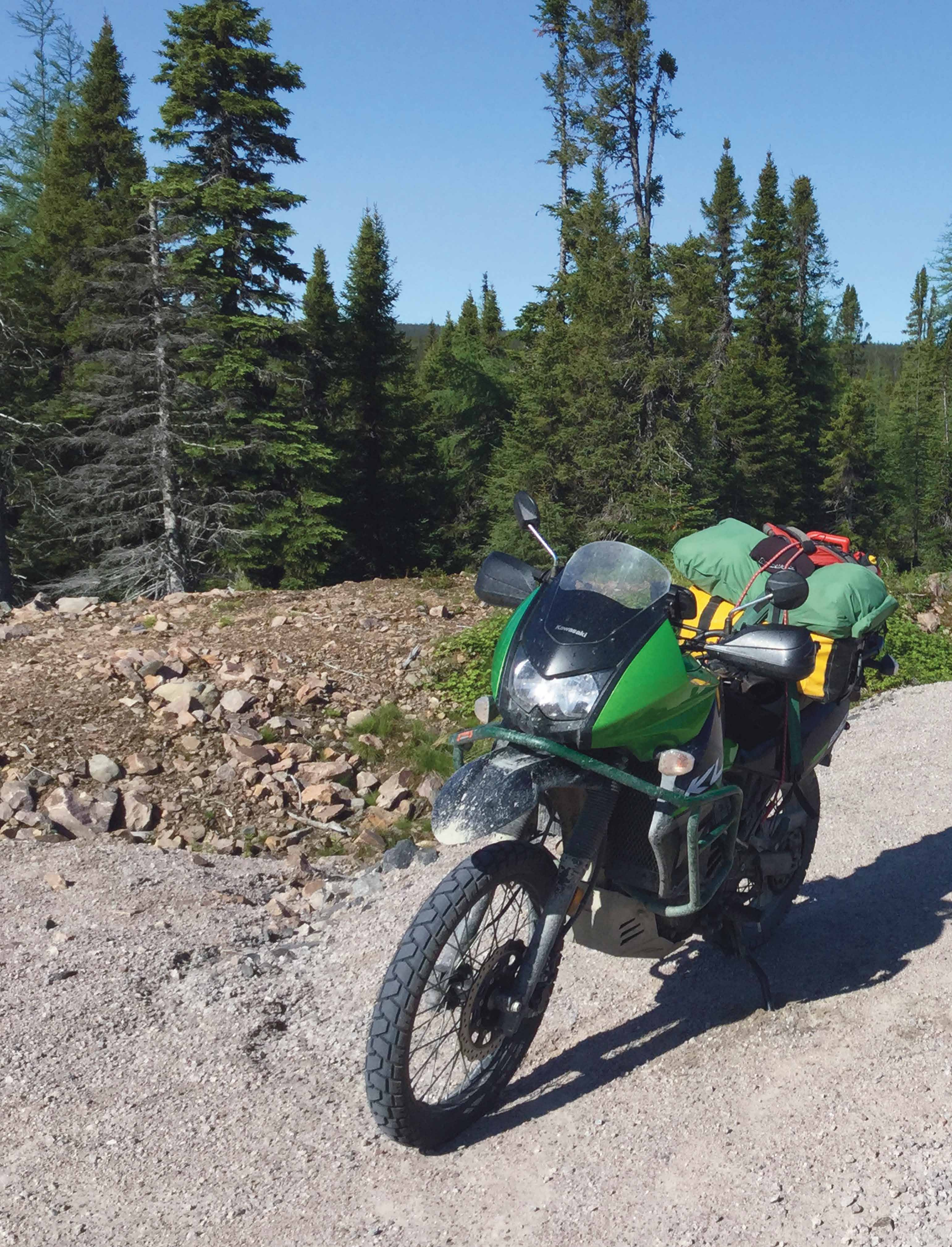
Je voudrais un café et un croissant et l’essence ordinaire KLR.”
Food, fuel and a chance to try my dodgy French started my day at Baie-Comeau on the east coast of Quebec. My goal was to ride the 1250km of the Trans-Labrador Highway, a remote route across the wilds of Labrador in Canada’s northeast.
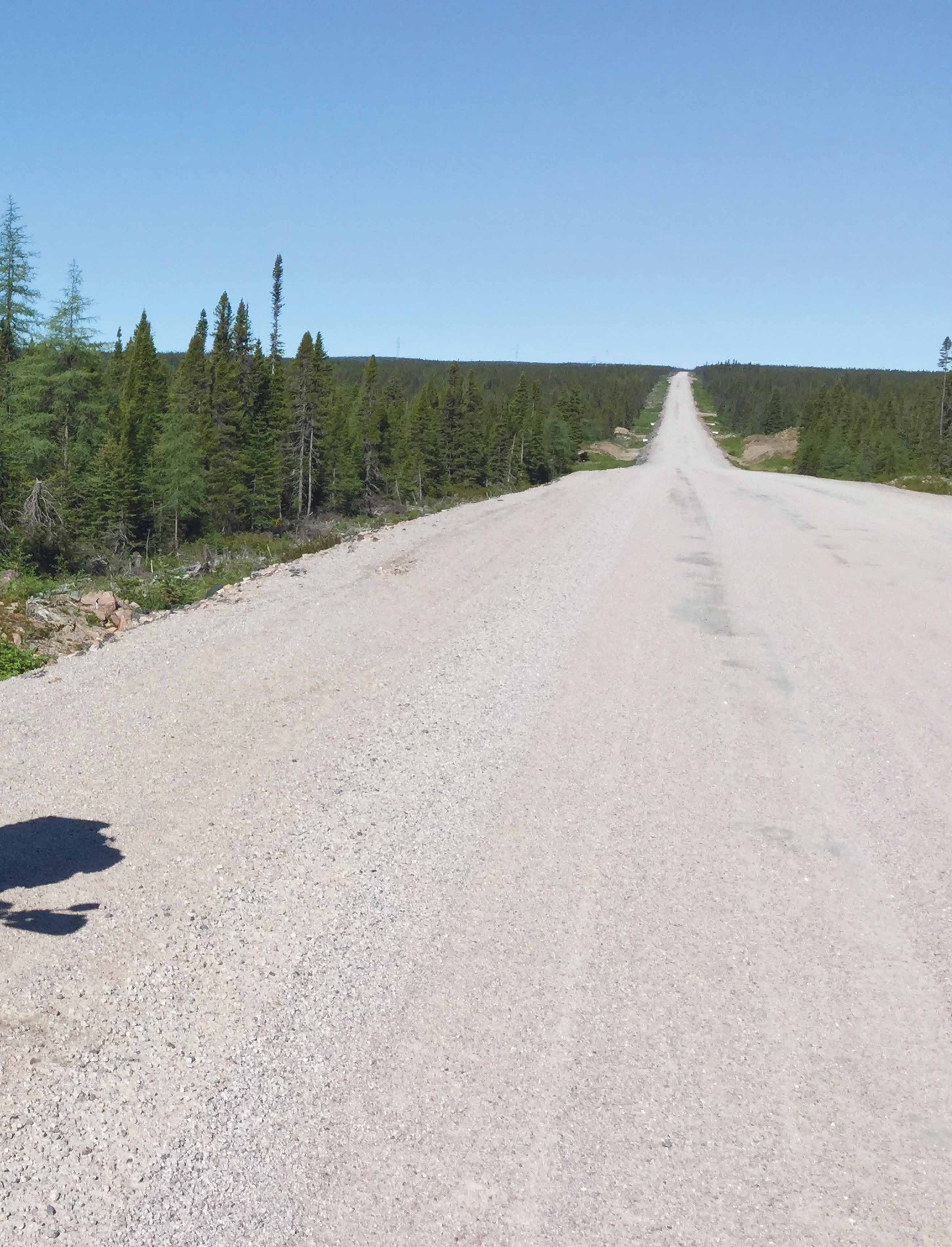 A mistake on the isolated TLH could result in a lengthy, painful rescue and an expensive end to a ride.
A mistake on the isolated TLH could result in a lengthy, painful rescue and an expensive end to a ride.
Happy riders
To complete the Trans-Labrador Highway (TLH) requires a three-day ride from Baie-Comeau to Blanc-Sablon, both in northern Quebec. The ride initially travels 600km north to cross the Labrador border near Labrador City, which is the start of the TLH, then east to Happy Valley-Goose Bay before heading southeast to the coastal ferry servicing Newfoundland.
It’s an adventure route that’s likely to be converted to just another road in the foreseeable future as the asphalt contractors continue their relentless march north. However, as I was to find, there are still substantial gravel sections through vast remote areas. These sections are subject to the vagaries of northern Canada’s weather, and are guaranteed to keep an adventure rider happy.
She’ll be right, mate
I fired up the KLR and rode towards my goal for the day, Labrador City.
The 200km of rolling hills, forests and streams on the well-surfaced road to Manic-Cinq, a small settlement established to service the nearby Daniel Johnson Dam and hydro site, was a great way to start the day. The 13 massive arches of the dam’s buttressed concrete wall made an impressive site as it towered 210m over the vehicles which had slowly descended from the plateau above. The dam site marks the beginning of two long gravel sections of road split by about 80km of bitumen on the remote 400km run through northern Quebec to Labrador City.

As I made my way north the loose-surfaced road climbed higher on the plateau, heralding the beginning of the deteriorating weather with a drop in temperature and then steady rain. The poor conditions, lack of mobile coverage and SOS phones stationed at regular intervals conspired to temper any push-on attitude I may have harboured.
“Who doesn’t enjoy solo riding at around 90kph with the dust trailing behind and the road stretching towards the horizon.”
The road, surprisingly at one stage, criss-crossed and paralleled a railway line servicing the mines scattered throughout the area. It felt odd in such an out-of-the-way location to actually have to stop at one crossing for an ore train to pass.
The rough and slippery road and poor weather took a toll on my stamina but proved all together too much for my number plate. The plate decided it had had enough and parted company and it wasn’t until Labrador City I discovered its escape. Google informed me I had to report its loss to the police, with which I duly complied. I had no alternative but to ride on without a plate.
Hey, I’m an Australian tourist. What could go wrong?
 Lack of mobile coverage and SOS phones stationed at regular intervals temper any push-on attitude.
Lack of mobile coverage and SOS phones stationed at regular intervals temper any push-on attitude.
Sticker stickler
Late in the afternoon, cold and wet after passing the town’s massive iron-ore mine, I booked into a motel in Labrador City to dry out. I must’ve looked bedraggled as I was allocated a room out the back.
Next morning I met four Canadians who couldn’t help joking that perhaps the KLR may not have been good enough to be seen out the front with their BMWs. This was my first of several meetings with ‘Mike’, who I was to meet again, purely by chance, two weeks and thousands of kilometres later in what turned out to be his hometown near Ottawa. I was taken aback when a car pulled in behind me and a voice called my name as I was again, wet and bedraggled, about to make a motel booking, only to discover Mike, who’d I not seen since the ferry crossing to Newfounland.
The road from Labrador City to Churchill Falls and on to Happy Valley-Goose Bay is a bit of a doddle, being 530km with an excellent bitumen surface.
As for Chruchill Falls, the hydro wasn’t releasing water from the nearby upstream dam, so let’s just call it a dribble on the rock wall. Hydro, along with mining, is the major industry in the area and there are extensive dams and power lines visible across the plateau.
Lunch and a fuel stop at Churchill Falls was another chance to swap stories with Mike and his friends and buy the ‘I Survived The Trans-Labrador Highway’ sticker.
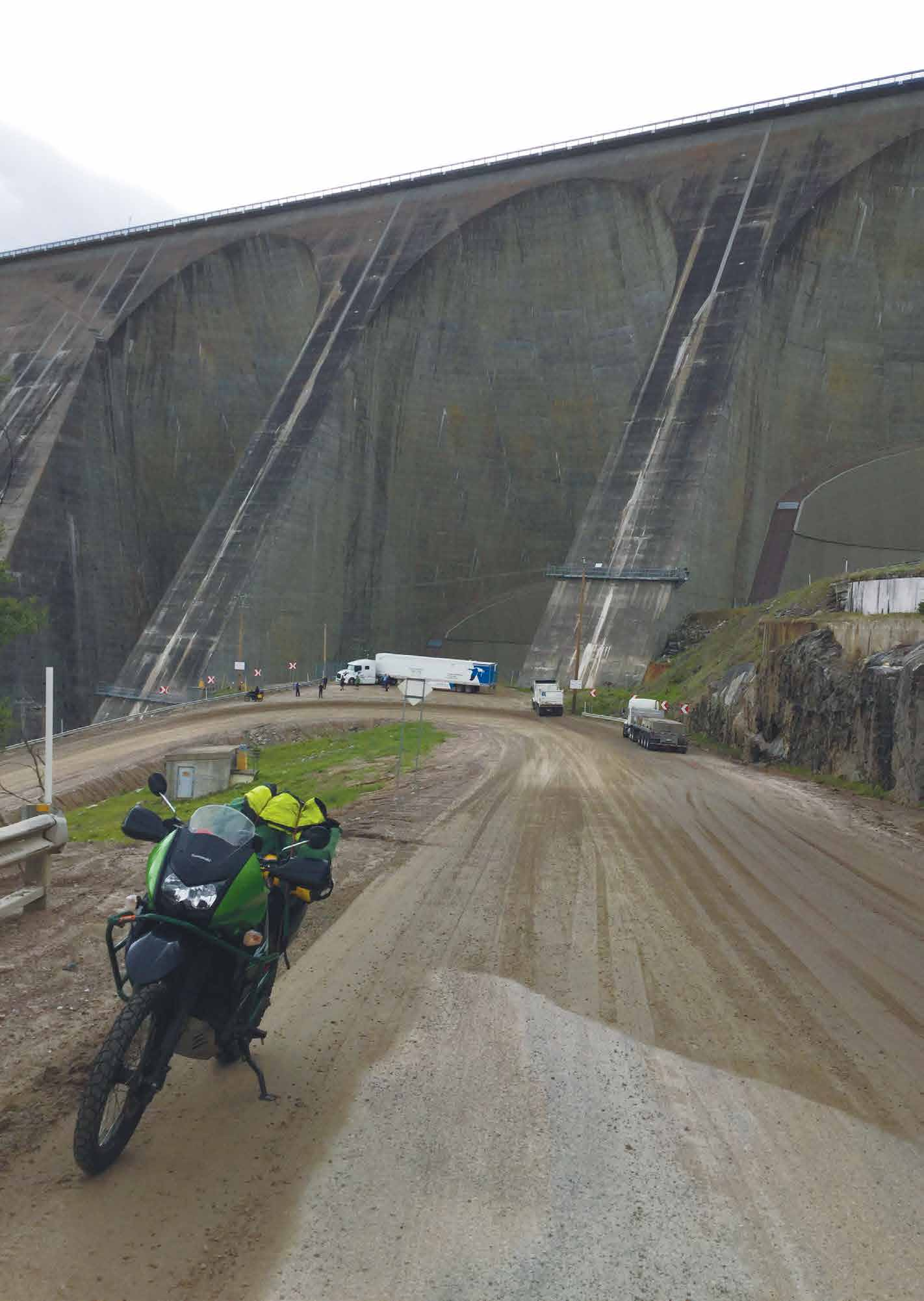 Daniel Johnson Dam and hydro site towers 210m and marks the beginning of two long gravel sections split by about 80km of bitumen on the 400km run through northern Quebec to Labrador City.
Daniel Johnson Dam and hydro site towers 210m and marks the beginning of two long gravel sections split by about 80km of bitumen on the 400km run through northern Quebec to Labrador City.
Tents discussion
The drop from the high plateau through the curves to Happy Valley-Goose Bay is a great ride with riverside cabins visible through the trees and the vegetation losing some of its stunted appearance.
After advice from the local tourism office, and with the bike and I fuelled up, I headed out to an abandoned RV park at Gosling Lake to set up camp for the night.
“The 13 massive arches of the dam’s buttressed concrete wall made an impressive site as it towered 210m.”
At 10:30pm I was roused from my tent by a voice calling “Hello! Hello!” to be confronted by a Royal Canadian Mounted Police officer standing beside his patrol car in the twilight. My thoughts immediately went to my missing number plate, but he instead enquired about my tent. As the mosquitoes seemed to be enjoying his presence rather than mine for once, I was only too happy to extol the virtues of Salewa products. It turned out he had a bigger tent for snowmobiling, but was looking for a smaller one for when he went trailriding on his DR in summer, and he liked the look of my tent. Missing number plate? “Don’t care about that.”
One of the joys of travelling is never knowing who you’ll meet and in what bizarre directions conversations may lead.
Eatin’ dust
The Trans-Labrador south from Happy Valley-Goose Bay is often described as the loneliest road in the world.
While it might qualify for the short list it’s a bit of an exaggeration, although I haven’t ridden it in winter with its -30°C temperatures and massive snow drifts to test my scepticism. I don’t intend to come back in winter, either.
As I rolled the 20km out of town before passing the ‘Next Services 392km’ sign, I was well aware a mistake on the section could result in a lengthy, painful rescue and an expensive end to my travels, but the thoughts were soon pushed to the back of my mind as I rode along on the loose, but certainly not difficult, gravel surface. Who doesn’t enjoy solo riding at around 90kph with the dust trailing behind and the road stretching towards the horizon,standing on the ’pegs and sitting as the surface demands? The ride was punctuated with the occasional stop for a photo, pee and snack as the kilometres all too quickly passed by. Every now and then a vehicle travelling the other way would pass in a cloud of dust, eliciting a wave, while catching the odd vehicle heading south meant a blast to get past before the dust became a three-course meal.
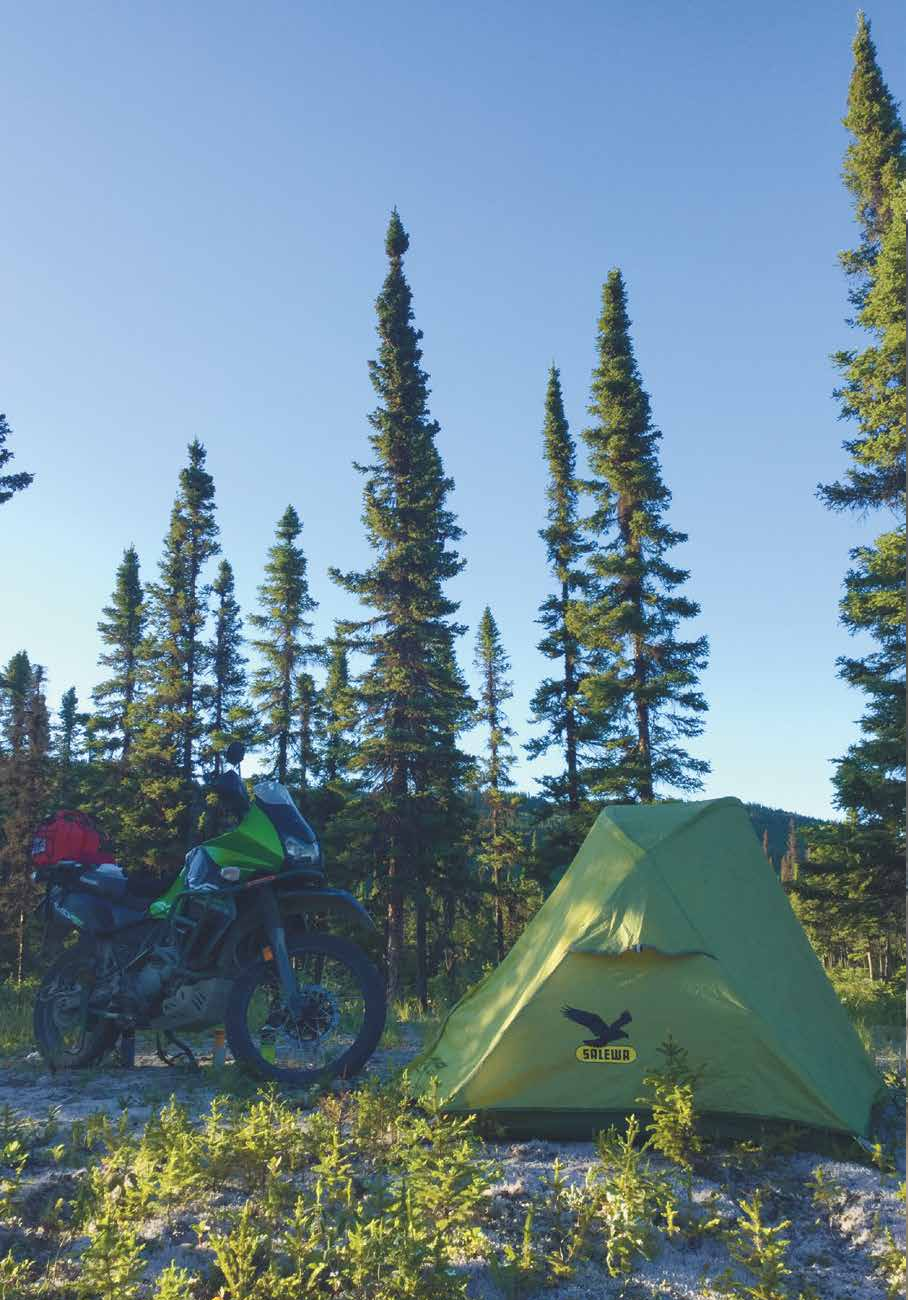
Diversions

Labrador is often described as ‘The Big Land’.
To ride the TLH is certainly avoiding the beaten path. I only saw five other adventure riders on its entirety. As this is the only through road in Labrador, worthwhile diversions are found before and after taking on the TLH.
The run across Quebec provides the opportunity to ride the ultimate Canadian remote-wilderness adventure road, the James Bay Road/Trans-Taiga Road route.
Starting at Matagami, the road is sealed for the 620km north to Radisson.
A 90km diversion to the west will take you to the shores of James Bay at Chisasibi.
Heading east from Radisson, a hydro gravel road runs a further 745km to the Caniapiscau Réservoir terminus where you turn around and start the ride back.
This is the furthest you can get from a town in North America. There are no services after Radisson, so a 4WD support vehicle would be a logical option. It’s on my to-do list.
The Maritimes offer travel options at the other end of the TLH. Newfoundland is a 90-minute ferry ride from Blanc-Sablon. Stunning scenery, Newfie accents, craft beer and rain await your arrival. Many side roads lead from the highways to the coastal towns and villages. It’s best to do your research as some are definitely more scenic than others. My favourite was Trinity, where I arrived at the colourful fogbound village to the sound of the foghorn sounding out across the bay.
Just north of Trinity is Port Rexton, famous for its brewery which does a couple of great porters.
Two ferry options lead further south to Nova Scotia from where it’s a short ride to the start of The Cabot Trail, Canada’s version of the Great Ocean Road and, yes, it’s as scenic as the guides suggest.
Slawter
I stopped somewhere to enjoy a pretty stream that gurgled through a culvert beneath the road and into an idyllic pool fringed by the stunted Arctic vegetation. There were no signs to name the stream. It was just one of the thousands in Canada’s north, but to me it epitomised why Canada is such a special place to visit. It’s brimming with stunning scenery in a vast wilderness which can be benign one moment and bite the next, and it’s all begging to be explored.
“At 10:30pm I was roused from my tent by a voice calling “Hello! Hello!” to be confronted by a Royal Canadian Mounted Police officer .”
It was on this stretch the inexorable march of roadworks in preparation for asphalt made its presence felt with heavy machinery and loose gravel to focus the mind. I finally reached Red Bay around 3:00pm and sat down, stomach rumbling, for a hot meal of cod and chips with coleslaw on the side.
 A foggy arrival at Trinity, a village on Trinity Bay in Newfoundland.
A foggy arrival at Trinity, a village on Trinity Bay in Newfoundland.
This section of the Trans-Labrador is synonymous with the start of ‘Iceberg Alley’. Side roads to towns such asCartwright and Battle Harbour invited the traveller to experience awe and grandeur, but my luck must have been out. On this ride the section could’ve been more aptly named Icebergless Alley, with the old maxim, “You should’ve been here last year,” a common refrain. Prevailing winds had pushed the bergs out to sea.
“This section of the Trans-Labrador is synonymous with the start of ‘Iceberg Alley’. ”
The area south of Red Bay marked the return of the bitumen as the TLH, on its way south towards the ferry at Blanc-Sablon, linked the small towns.
For my third night I pitched my tent on the oceanside terrace beneath the provincial historic site, Point Amour Lighthouse. From there it was a short ride through L’Anse-au-Clair and over the Quebec border to the ferry terminal.
Again I caught up with Mike and his friends as we waited for our lift at the gateway to The Maritimes.
St. Barbe and Newfoundland awaited.
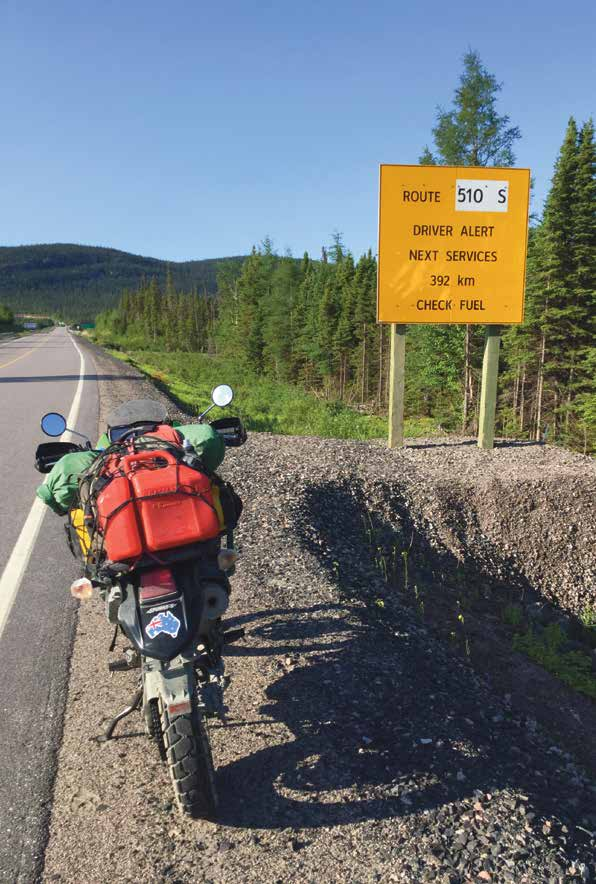
Logistics
Hiring a bike in the US may be an option as it’s at least a week’s ride and thousands of kilometres across Canada to start this route. I couldn’t find many eastern-Canadian hire options when doing initial research.
Fuel and food are available at Baie-Comeau, Manic-Cinq, Labrador City, Churchill Falls and Happy Valley-Goose Bay. There are no services for the 420km wilderness ride south to Port Hope Simpson.
After Red Bay food and fuel are readily available.
Mobile coverage is not available along much of this route. SOS phones are dotted at intervals between Manic-Cinq and Labrador City.
Free satellite phones are available for travel between Labrador City and L’Anse-au-Clair. Yes, it’s so remote that even two TLH truck drivers I spoke to regularly availed themselves of the service. A driver’s licence and credit card are sighted as security.
Visit the TLH Satellite Phone Loan Program website to find pick up and drop off locations.
The ferry crossing from Blanc-Sablon, Quebec, to St. Barbe, Newfoundland, operates twice each day throughout summer on an 85-per-cent prebooking system. Fifteen per cent of capacity is kept for those who turn up on the day.
On arrival you’re allocated a number in the queue and that’s your order of boarding. With a bike you’re likely to get on, but, to be sure, get to the terminal early to get a low number.
The summer ferries to and from Newfoundland are booked out months in advance, but I had no trouble turning up on the day. If you have a support vehicle, prebook.
Finally, if you do decide to ride across Canada, I can highly recommend the friendly service provided by the team at Trans Canada Motorsports at Brandon, Manitoba. I stopped there on the way across for an oil change and new tyres. Two weeks later they were bemused to see me arrive again for another oil change and rear tyre. ‘Crazy Australians,’ was their opinion.



















Comments